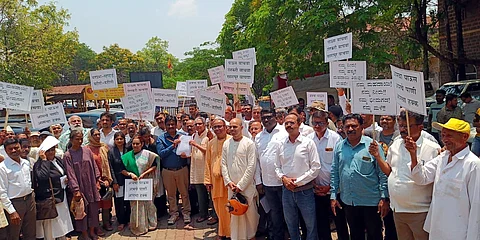

The Karnataka government’s Kalsa-Bhandura (Kalasa-Banduri) water diversion project aims to divert water from the Kalasa and Bhandura tributaries of the Mhadei (Mahadayi) River to the drought-affected Malaprabha basin. This project intends to supply drinking water to several North Karnataka districts, including Belagavi, Dharwad, Bagalkot, and Gadag. According to the Mhadei Water Disputes Tribunal, Karnataka has been allotted 7.56 TMC of water, with 2.18 TMC designated for the Bhandura dam and 1.72 TMC for the Kalasa dam.
However, the project has met strong resistance from environmentalists and local communities. Critics warn that diverting water from the Mhadei basin threatens the fragile ecosystem of the Western Ghats, a UNESCO World Heritage site known for its rich biodiversity. The diversion could disrupt river systems, lead to deforestation across thousands of hectares, and threaten wildlife habitats—including sensitive tiger corridors. Environmentalists fear that this could cause long-term ecological imbalance and even desertification in some areas.
Protests against the project have gained momentum, especially in Goa and border regions like Belagavi and Khanapur. Activists such as Capt Nitin Dhond and climate campaigner Ridhima Pandey have led the “Our Water, Our Right” movement, demanding reconsideration of the project’s environmental impact and advocating for sustainable water management.
Despite approvals from the Central Water Commission and the Mahadayi Tribunal, Karnataka still lacks crucial environmental and forest clearances required for the project. Nevertheless, preparatory work, including pipeline alignment and pipe fabrication units, has already begun in forested areas like Nerse.
The Goa government continues to challenge the project in the Supreme Court, raising concerns about ecological risks and inter-state water sharing. A major protest held on June 3, 2025, renewed calls for halting all project activities until legal and environmental clearances are fully obtained.
The Kalsa-Bhandura project remains in legal limbo, with its future dependent on court rulings, environmental approvals, and growing public opposition.